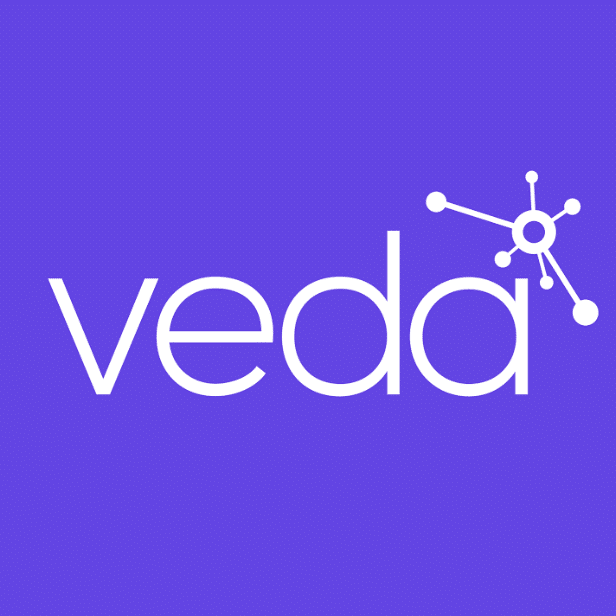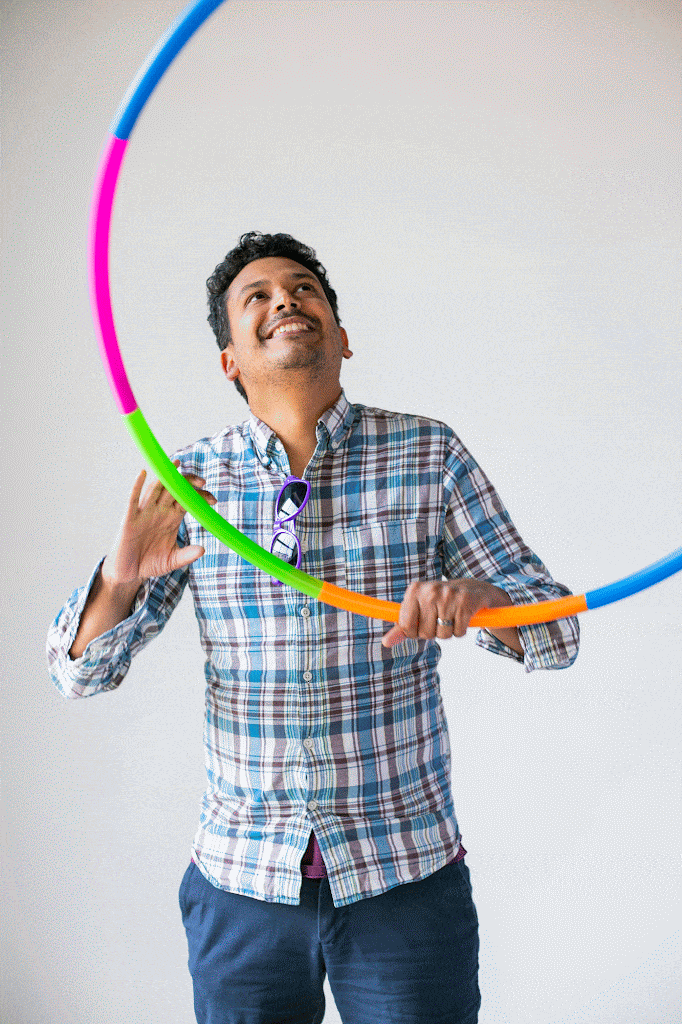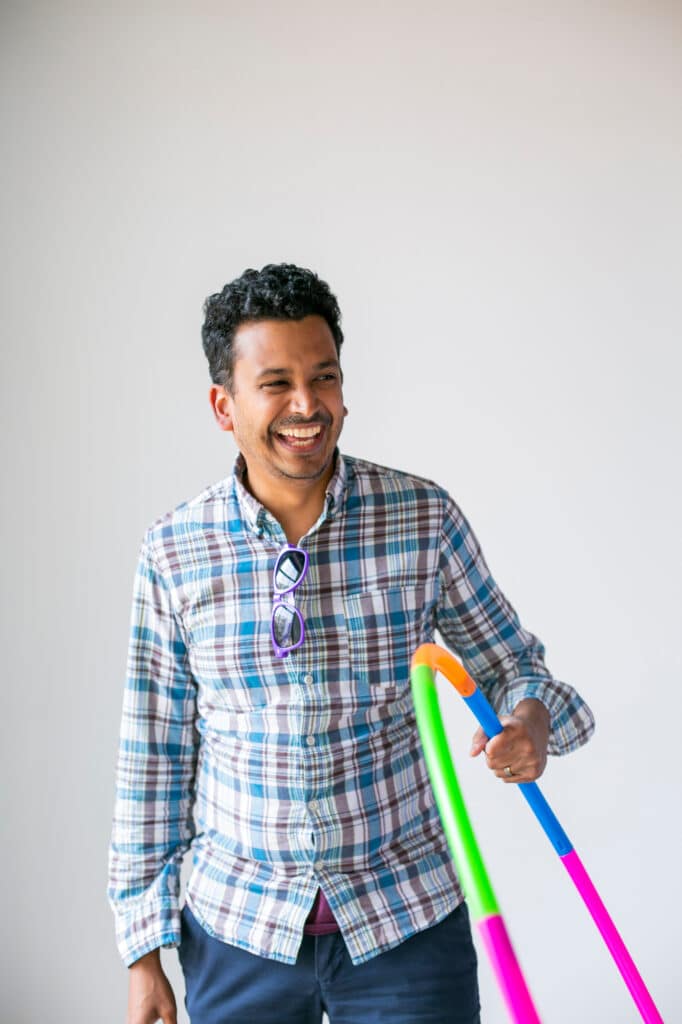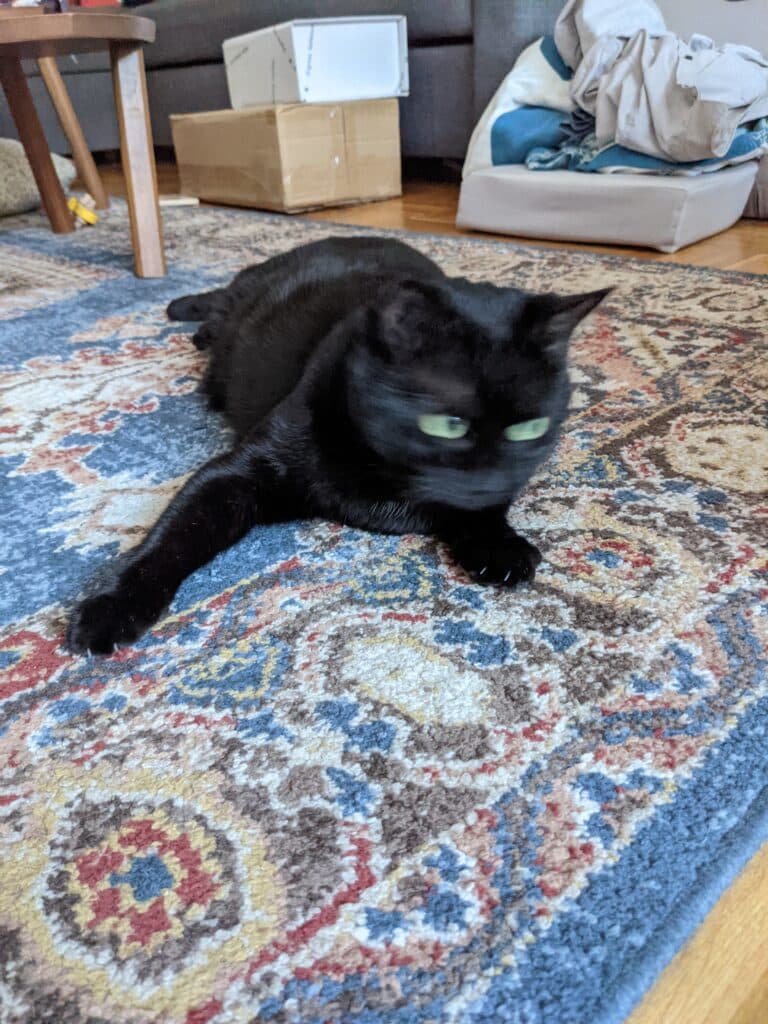
Veda
People, Patterns, and Physics: Q&A with Veda Data Science Manager, Rishi Patel
Veda’s science department is dedicated to solving complex data issues with creativity and imagination. Learn more about Veda Data Science Manager, Rishi Patel, and his scientific approach (and improv background) in the Q&A below.

You have a history with Veda Co-founder, Dr. Bob Lindner, how did you meet?
I did my graduate degree at Rutgers with Bob. Within the first week of school, Bob and I were in the library looking for the same book. We started discussing and working on assignments together. We’ve kept in touch and encouraged each other in different pursuits in the academic and scientific fields. Bob encouraged me to step out of the lab and get into the world to attack more pertinent problems with the same skill set we used in academia.
For example, during the early start of the pandemic, there was a giant data set of all the COVID-19 literature coming out, including things from the past. Like an article from the 1800s about early pulmonary diseases. It was in PDF and you couldn’t mine it. Usually, all my data is quantitative but this data was text. I’m used to looking at pictures and in this, I was looking at text and breaking it into keywords like particles. If you have enough of certain keywords, you can say “maybe this is really important,” but let me make that decision later and filter out the important keywords.
I was able to take half a year’s worth of COVID-19 literature and combine it into a couple of paragraphs. It proved Bob’s point–that if I tried to take what I learned in the lab and look at a dataset that I have no expertise in, something good would still happen in the end. Basically, we could generate knowledge through experimentation the same way we were doing in our research. I still get messages and questions about this research today.
Talk about your role in Veda’s science department, how are different members of the team approaching science?
When Bob and Carlos Vera Ciro (Veda architect) were focused on the biggest and largest aspects of the universe, I worked on creating small versions of the big bang in a controlled environment. Putting it another way, while Bob and Carlos may see a huge picture, I see little wisps of energy in a particle detector.
What’s powerful about our comparisons, the methods that they use, and the methods that I use–for what should appear to be very disparate and strangely different–in analyzing data, it’s roughly the same. We approach things in the same way and we have the same divisions: I’m experimentation, Bob is observation, and Carlos is theory. My work requires me to know a little bit about theory and the constraints that come from what we’re trying to prove. To solve provider data problems, you have to have a good hypothesis and that’s likely going to come from seeing a solution in an intuitive way from the perspective of our clients.
Why do you think a health tech start-up even needs an entire science department?
I love that Veda has a whole team dedicated to the scientific process. We want to know “what is true and how do we test it?” That’s a strong competitive edge compared to other companies.
“Having an entire science department, all verifying something is true in collaboration with each other, is more than just the icing on the cake, it is the full entree.”
The incredibly challenging data we work with gets me jazzed. We have to ask, “how do we present this in the simplest fashion for the end user?” That is a powerful engine in data science, not just finding the data and guiding strategy, but creating a picture or a product where there are a-ha moments all day long. Being able to build products that provide those moments makes me super excited.
A big part of science culture is the ability to break things down so that science is sharable. This is also what keeps me motivated.
Tackling a big challenge is like climbing a mountain, there are highs and lows and points at which you want to give up. It is satisfying to finally make it to the top and learn something about what you are capable of. But then taking a picture from the top and sharing it with the world, that’s the moment when you feel victorious.

How did you become interested in science as a career path?
In high school, I hated math and science. I thought it was super boring and I even remember doing an abysmally low amount of math homework compared to any other subject. I thought that I would never major in a hard science or a quantitative field. I thought I’d be a writer and I went to NYU planning to major in philosophy and writing.
But the real hook for me was how different math was taught in college compared to high school. The math started with the bigger question and then you start to build out answers in a sequential way. It felt like reading a mystery novel– you guess what the right answer might be, test it, and maybe you’re wrong, maybe you’re right. That really pivoted my enthusiasm for math and science. Physics felt real and tangible. You could look at the sun and imagine what’s going on there. Really, you could look at anything in the world, big or small, and try to solve it like a puzzle.
“In science, seeing sparks a kind of wonder, and plants seeds of questions centered around the “how” and the “why.” When the seeds become a forest, the crux of being a scientist is being able to say “I have seen this before, I know how to find my way.”
You previously did research at CERN, the largest particle physics laboratory in the world. How did you end up in the healthcare field?
When you start off as a data scientist, there are so many sectors and you have to find what you’re interested in. There isn’t a perfect fit for going from particle physics data to anything else. I realized healthcare data is very complex because it’s people and patterns.
“People and patterns are way more complex than particles and patterns because all particles behave the same while people of course do not. When you start to look at different patterns in similar contexts, it really challenges your ability to recognize patterns.”
Describe your role at Veda. If someone asks “what do you do at work,” what do you tell them?
I am a data science manager for the data science team. This means, I ask the key scientific questions to try and poke at the data scientists’ arguments and check to make sure that what they’re developing is aligned with the truth. Everything we’re working on must align with both our intuition and the patterns found in the data.
It’s my job to take the problem and break it down into actionable items and testable output. We go from big questions to small actionable questions and test the hypothesis to see if we can continually make improvements in the model.
What data process do you use at Veda?
I am focused on three letters: ETL (Extract, Transform, and Load). This data process is what I’m living every day.
- Extract. Can we collect the data to inform our hypothesis? What truth can we collect? What is available out there from public records? Could we make phone calls and verify what our models are saying? Is it still up to date? Is there an inefficiency in our model that a human could catch when they ask questions to another human?
- Transform. This is where the core skills of data science come in. We get a bunch of data but we want to make it useable. We want an answer to give somebody for what they should do based on the data and the patterns we believe are true. For example, for a care location we do a bunch of checks to be sure an address is really valid and give it an accuracy score. We want to make sure our clients know what to do with that score. The transformation always connects to the customer vision and our pattern must be intuitive enough to interpret.
- Load. Here’s the customer vision. We go back to the model and see it from a customer’s lens. Is the row really valid? What can we do to justify it? For example, does this provider have a state board address and do they have prescribing power? We see doubts from the client’s perspective and make an argument to see how to best prove the decision we are recommending.
When you get stuck on a problem, what is a resource you use to get past it?
I’m part of a start-up collab Slack channel called On Deck where we meet regularly to discuss general data science problems. We get to see what challenges we’re all facing. For instance, how do we communicate really technical things to those who need brief and actionable answers? Or how much time should we invest in this issue? We work through those questions and agree on steps. It’s magical to me that data scientists can come from different backgrounds but when you start to compare notes on a given problem, there are pretty strong steps for how to solve it. It’s reassuring that we walk down similar paths to find a solution, so there is some standardization in the process of being a data science manager.
Say a student comes to you and says they want to be a data scientist. What advice do you have for them?
Can you let things go? The ability to ruthlessly prioritize and reach a more balanced focus is a key part of data science management. If there’s one thing that really irritates you, and you want to get it right, and there are so many other priorities that are more important, you have to let that irritating thing go and solve it later. You can dream up a new idea every day but that might not answer the question you’re trying to solve.
You work at Veda so you’re statistically likely to have a pet. Tell me about yours.
I have a cat named Luna who has lived in three different countries. She was an Italian farm cat, who lived with an Australian family, then we adopted her in Switzerland. We love her broken tail–there’s always beauty in imperfection!

You did improv and acting while you lived in Switzerland. I can’t imagine there are many data scientists sharing a stage with you. How does this relate to science?
I was always interested in improv and acting. As a scientist you’re always taught to look and judge but in improv, you have to invert that process. You have to accept what’s given to you and do the “yes and.” It’s exciting to see where an improv scene is going to go and how you’re going to respond. That degree of chaos is exciting.
I see science as creativity with constraint. That’s what makes it a cousin of art. You have to think out of the box to solve problems but the constraints are heavy. Improv removes the constraints and it’s fun to build a new world without constraints.
Connect with Rishi on LinkedIn.
THE TOP CHOICE FOR HEALTH CARE
We're the authority on health plan data. See how Veda's Smart Automation platform can work for your health plan. Improve data accuracy, reduce workloads, and enhance the member experience. But first, start with a free demo.